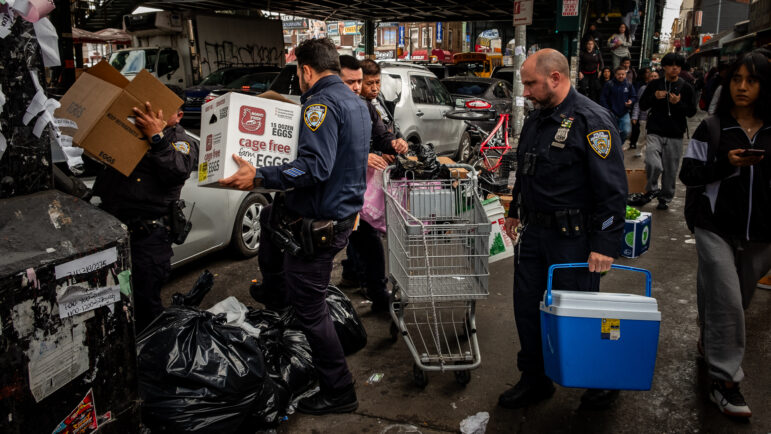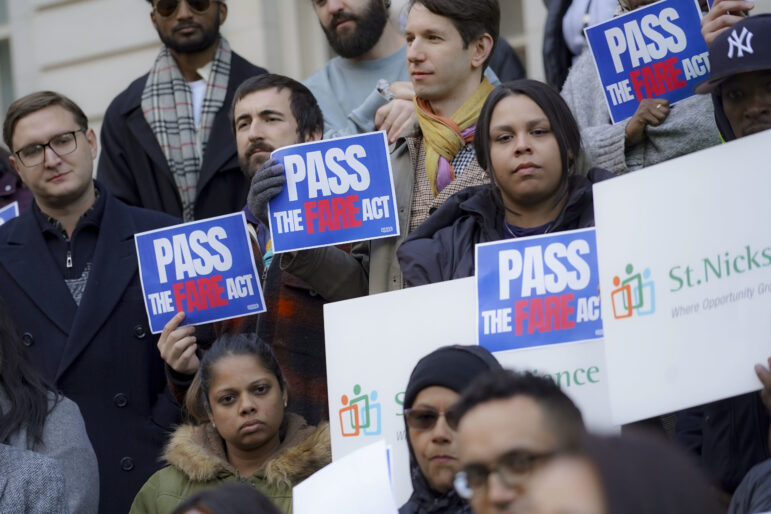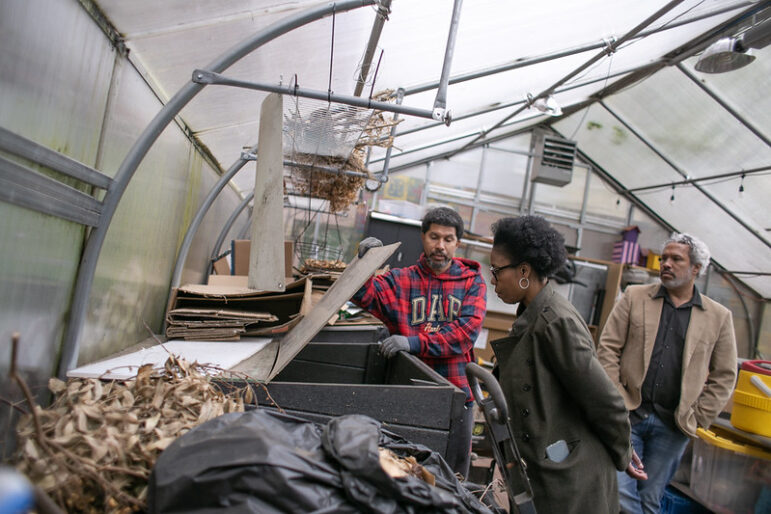In 1981, the young ethnographer Kim Hopper and his colleague Ellen Baxter published the first extensive documentation of modern-era homelessness in New York City–dubbed Private Lives/Public Spaces–adding their voices to a rapidly growing public outcry. The Reagan recession and a push to move people out of mental institutions were combining with a massive loss of housing stock to send thousands onto the city streets and into public shelters. Moral outrage was building: there were marches and protests, demonstrations and theatrical “fasts to the death” by activists like Mitch Snyder (he came close a couple of times).
The dispossessed had just sued the state–and won! The 1979 class action Callahan vs. Carey established the legal rights of New York’s homeless to a minimum of services, including shelter. The momentum generated in New York City ultimately led to the passage of the federal McKinney Act in 1986, which dedicated hundreds of millions of dollars to a dizzying array of programs across the country, from schooling for homeless children to treatment for the mentally ill. Kim Hopper, as a researcher and activist–he was among the founders of the National Coalition for the Homeless–was part of this movement.
But moral outrage fizzled and a crisis became chronic–then merely a problem, another fact of New York life. More than 20 years later, Hopper has offered us a reassessment. In Reckoning with Homelessness the Columbia University anthropologist mixes theory, ethnographic fieldwork, history and reminiscence to produce a both readable and exhaustive look at America’s modern struggle with homelessness.
Hopper focuses on homeless men, in part because there’s more research on this group to examine, and more importantly because of the enduring stigma they’ve suffered throughout American history. Yet Reckoning is neither a romantic plunge into the depths nor a dry catalogue of the habits of the disaffiliated. Hopper explores these men’s lives on their own terms. His primary purpose is dispelling our collective illusions about the homeless, for only clarity can make effective action possible. And his challenges are aimed not only at the powers-that-be, but at fellow activists and anthropologists as well.
_______
After opening Reckoning with the requisite academic press overview of his methodology and theoretical framework, Hopper offers a useful thumbnail sketch of emergency shelter in New York City, both formal and informal. There are enduring themes. From the establishment of the House of Correction, Workhouse, and Poorhouse in 1734, to the present day, the municipal response to homelessness has lurched from one ludicrous makeshift solution to another.
Those of us who are appalled by Mayor Bloomberg’s proposal to house the homeless in an abandoned jailhouse should remember that, throughout the latter half of the 19th century, the police were charged, first informally and then by law, with caring for the indigent. Every night, thousands slept on the floors of overcrowded station houses across the city, each with “his boots as a pillow and his coat for a covering”–much as families still do at the Emergency Assistance Unit in the Bronx.
In 1909, public outcry over this system led to the creation of the first modern warehouse for the homeless: the Municipal Lodging House, which in turn was quickly overwhelmed by the unemployed during the depression of 1914 and 1915. Of course, even back then social scientists attempted to ascribe homelessness to anything but the loss of livelihood. Cutting-edge eugenicists invented scientific terms like “moron” to describe people who they identified as socially dysfunctional, rather than examining the barriers to their participation in society.
But the meat of Reckoning comes from Hopper’s 25 years of fieldwork. He’s at his best when he carefully reexamines his earlier documentary work in order to present the true nature of his subjects’ lives.
When Hopper began his research into what would later become Private Lives/Public Spaces, he set out to provide a simple answer to a question today’s politicians and municipal policy wonks still ask: Why don’t people like our public shelters? Hopper’s account of the infamous men’s shelter on Ward’s Island, drawn directly from his field notes, depicts shelter life at its worst: abusive and indifferent staff; mayhem among the guests; the old and incapacitated left to fend for themselves. “‘Do you really want to see how they treat the group down here?’” Hopper remembers a resident asking him. “When I nodded, he told me to go into the bathroom, where I found a man cleaning the floor. The man’s shirt was stiff with dried blood from, it turned out, two stab wounds he had received the night before. Both wounds were open.… He was mopping the floor at the staff’s instruction.”
The Bowery flophouses were not much better for the “ticket men” who, until recently, received vouchers from the city to pay for a dormitory. The threat of physical violence was less present, but life in the filthy upper floors of these decaying tenements was an open invitation to despair. Their residents were pariahs even among those deemed second-class citizens.
In contrast to the conditions these publicly subsidized options presented homeless men, life in the steam tunnels under Grand Central made a kind of sense: access to food from parked trains, hot water taps and sinks nearby and the possibility of a degree of privacy. The decision to dwell underground is not symptomatic of some inherent disorder; it’s simply a logical adaptation to circumstances. Not that Hopper recommends it. As one old-timer told him, “The loneliness, it’s not good. You get used to it, but it’s not good.”
Anecdotes such as these illustrate Hopper’s willingness to be an attentive witness rather than impose his research agenda upon his subjects. A striking example is his study of the people he found living at “Metropolitan Airport” (a carefully chosen pseudonym to fend off unwanted publicity for those who might still call it home). Beginning in the 1960s, reports started surfacing about surprising numbers of mentally ill people showing up at airport terminals around the country. A couple of British researchers offered varied, somewhat fanciful explanations–the airport as symbol of departure, perhaps a desire to visit a national monument–before concluding simply that homeless people found it easy to blend in, and thus avoid harassment, at an airport. But American experts made a beeline toward pathology. One study’s title summed up the feeling of domestic observers: “Airport wandering as a psychiatric symptom.” In these researchers’ eyes, the homeless who gathered at airports were driven “to outrun their problems, their symptoms, and their failures.”
The real reason that the homeless flock to airport terminals, as you’ve probably guessed, is bathrooms–that, along with snack bars, air conditioning, good security and a reasonably friendly staff.
_______
Hopper’s research observations are dead-on because they so often favor the obvious over the recondite. But then, homelessness itself is becoming an ordinary–often repeated–experience in the lives of the poor. Intermittent homelessness is turning into a way of life. Hopper believes this to be the case particularly among poor African-American men, who cross back and forth between home, shelter and the street, depending on circumstances and situations.
But here he runs into difficulties. Because African-American men have increasingly swelled the ranks of the homeless in the last few decades, Hopper feels obligated to treat the subject as best he can. However, by his own admission, there is a real lack of current research on the lives of homeless black men. Hopper believes that shelters serve as a kind of safety valve for overstrained black kinship networks. But he’s not working from his own observations here, and the chapter lacks the incisiveness of the preceding ones. Things are further complicated by continuing debates over the nature of the black extended family and the validity of invoking “culture” in social research (especially the racially charged designation “underclass”). In his defense, Hopper is always honest about the limits of our understanding, and he offers the following as just a working hypothesis: “When market losses in affordable housing and decent work are coupled with the mounting strains on extended families, feminization of familial discipline, the growth in the drug trade, and continued failures, homelessness seems an all but foregone conclusion.”
Reckoning concludes with some pointed advice for researchers and advocates alike. Activists have made some real gains over the years, particularly in pushing governments to rapidly move people out of shelters and into permanent housing (which has raised a sticky ethical question: Do those in shelters have a right to jump the housing queue?). But it’s hard to avoid the conclusion Hopper and others arrive at–that all of these efforts have ultimately been a dismal failure. Why? They just keep coming!
“The lines of those ‘exiting’ from homelessness were replenished because of the vast numbers of near-homeless who kept joining them,” Hopper writes. “‘Emergency’ measures are stymied by such substitution effects whenever the generative forces behind the crisis go unchecked.” In other words, emergency housing just might be the wrong issue for policymakers, activists and researchers to be focused on. According to Hopper, advocates have trapped themselves within the narrow scope of an endless wrangle with government over the legal right to emergency shelter at the expense of broader issues of livelihood and housing that keep so many on the brink of destitution. As long as these remain unaddressed, the moral affront of homelessness will remain a day-to-day part of our life.
Bob Roberts is a Bronx-based freelance writer.








